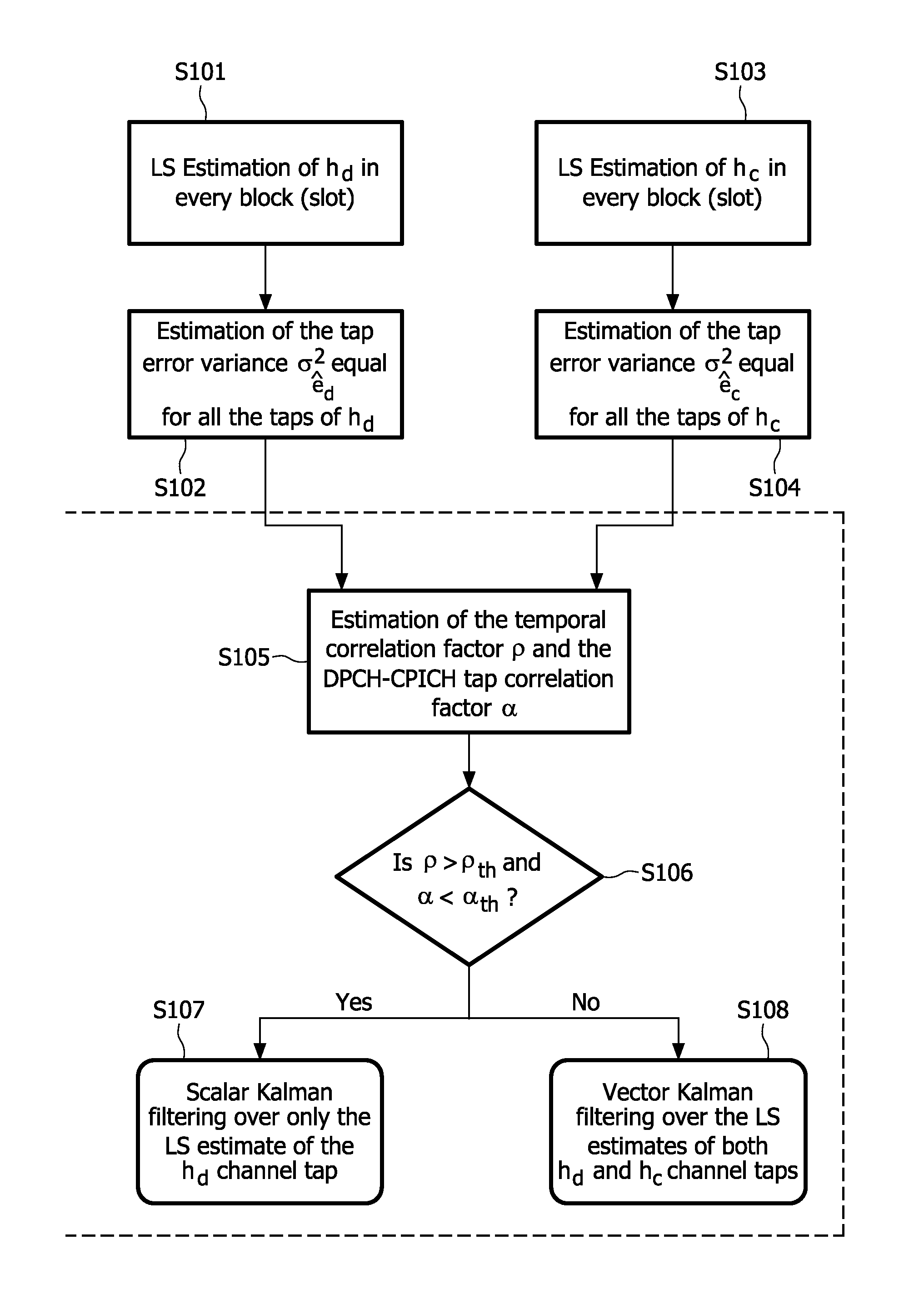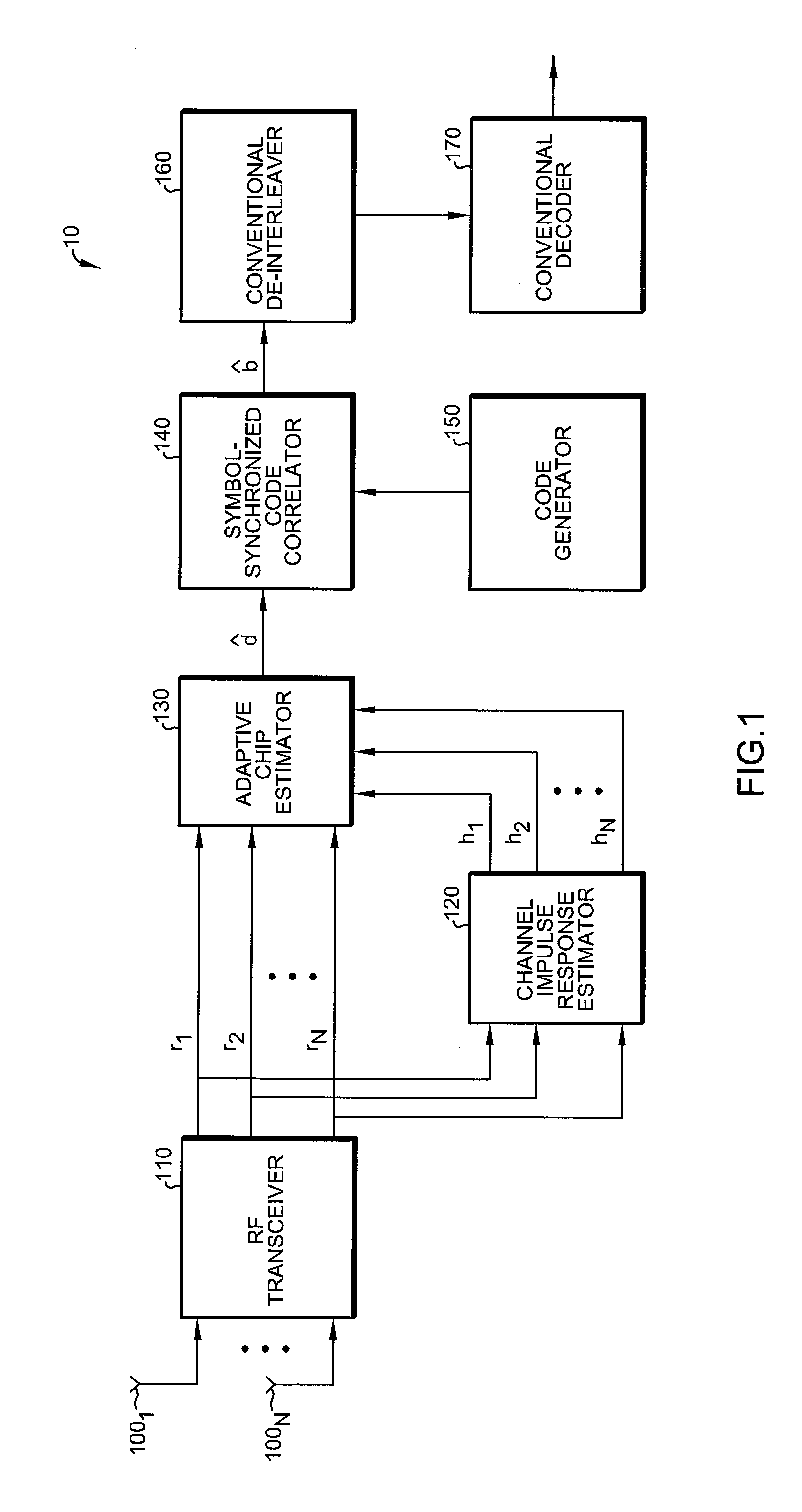Channel estimation using common and dedicated pilots
a channel estimation and dedicated pilot technology, applied in the field of receiver apparatus and channel estimation, can solve the problems of limited accuracy of channel estimation approach relying on dpcch channel, inability to use in the presence of beamforming, and inability to adapt to the physical channel cpich transmission, etc., to achieve enhanced channel estimation and better performance
- Summary
- Abstract
- Description
- Claims
- Application Information
AI Technical Summary
Benefits of technology
Problems solved by technology
Method used
Image
Examples
Embodiment Construction
[0027]In the following, the preferred embodiment will be described based on a receiver of a UE according to the UMTS standard.
[0028]FIG. 1 shows a schematic block diagram of the receiver 10 in which the preferred embodiment of the present invention can be implemented. The receiver 10 has an adaptive interference suppression algorithm, which is based on channel equalization and suitable for synchronous CDMA (Code Division Multiple Access) systems using orthogonal spreading codes with code scrambling. In particular, the receiver 10 is not obliged to have any training sequence or training information for the adaptation of the equalization. It only needs initialization weights obtained from a channel estimation scheme.
[0029]According to FIG. 1, at least one antenna 1001 to 100N receives signals from a telecommunications channel. The signals are coupled to a conventional RF transceiver 110 including an analog-to-digital (A / D) converter. The conventional RF transceiver 10 may optionally p...
PUM
 Login to View More
Login to View More Abstract
Description
Claims
Application Information
 Login to View More
Login to View More - R&D
- Intellectual Property
- Life Sciences
- Materials
- Tech Scout
- Unparalleled Data Quality
- Higher Quality Content
- 60% Fewer Hallucinations
Browse by: Latest US Patents, China's latest patents, Technical Efficacy Thesaurus, Application Domain, Technology Topic, Popular Technical Reports.
© 2025 PatSnap. All rights reserved.Legal|Privacy policy|Modern Slavery Act Transparency Statement|Sitemap|About US| Contact US: help@patsnap.com



